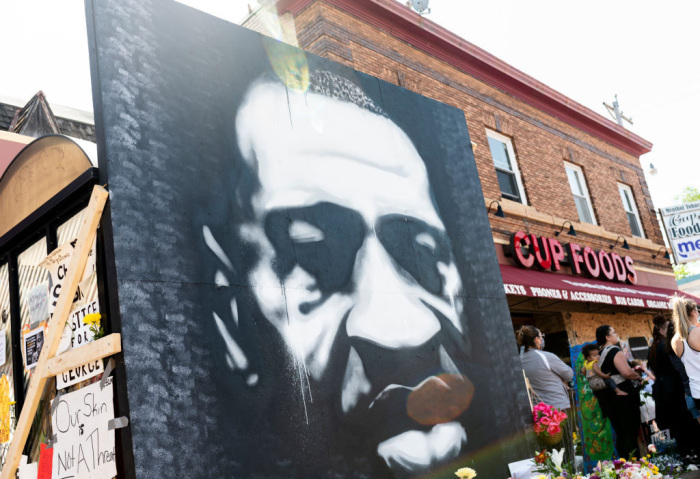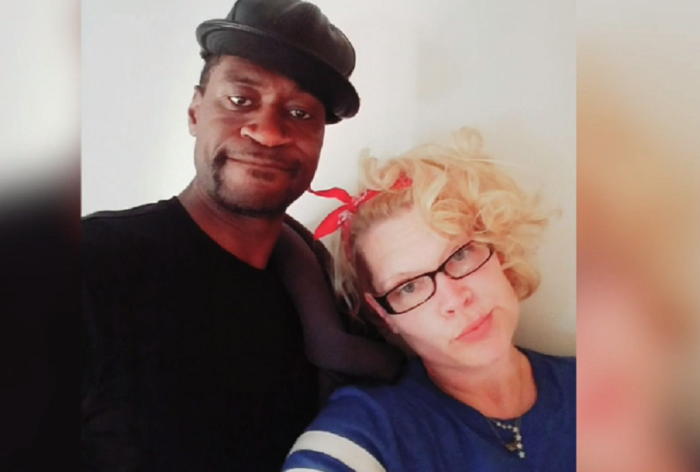Witness in car says George Floyd did not resist arrest; complaint alleges struggle

George Floyd tried to show that he wasn’t resisting arrest before he stopped breathing in the custody of Minneapolis police officers on Memorial Day with the knee of officer Derek Chauvin still resting on his neck, according to a friend and witness who was with Floyd when officers detained him.
“He was, from the beginning, trying in his humblest form to show he was not resisting in no form or way,” Floyd’s friend, Maurice Lester Hall, 42, told The New York Times on Wednesday night.
Floyd’s friend, who was arrested Monday in Houston on three outstanding felony warrants, was interviewed by Minnesota state investigators after he initially gave a false name to officers at the scene of Floyd's arrest on May 25, the newspaper reported.
“I could hear him pleading, ‘Please, officer, what’s all this for?’” Hall said.
The interview with Hall comes in the wake of the arrest of all four fired officers involved in the tragedy Wednesday.
Chauvin, 44, who was previously charged with third-degree murder and manslaughter for Floyd’s death, had his charge upgraded to second-degree murder on Wednesday by the office of Minnesota Attorney General Keith Ellison.
Meanwhile, the three other former officers — 26-year-old J. Alexander Kueng, 37-year-old Thomas Lane and 34-year-old Tou Thao — were all charged with aiding and abetting second-degree murder.

Charging documents state that while the initial encounter between Floyd and the officers started without much hassle, things took a dark turn when Floyd asked not to be put inside the back of a squad car because he was claustrophobic. They struggled to put him there anyway.
According to the prosecution document, someone called 911 and reported that a man bought merchandise from Cup Foods at 3759 Chicago Ave. in Minneapolis with a counterfeit $20 bill.
At 8:08 p.m., officers Lane and Kueng arrived with their body cameras activated and running.
The officers learned from store personnel that the man who passed the counterfeit currency was parked in a car around the corner from the store on 38th Street.
Footage from the body cameras shows that the officers approached the car. Lane approached on the driver’s side and Kueng on the passenger’s side. Three people were in the car. Floyd was in the driver’s seat. A known adult male, now identified as Hall, was in the passenger seat. An adult female was sitting in the backseat.
Officer Lane pulled his gun and pointed it at Floyd’s open window as he began speaking with him and directed him to show his hands.
When Floyd put his hands on the steering wheel, Lane put his gun back in its holster.
Lane eventually ordered Floyd out of the car as Kueng spoke with the passenger in the front seat. He then put his hands on Floyd, pulling him out of the car and handcuffing him.
Once handcuffed, Floyd walked with Lane to the sidewalk and sat on the ground as directed by Lane. When Floyd sat down, he said “thank you man” and was calm, the charging document stated.
After about two minutes of conversation, Lane asked Floyd for his name and identification. Lane then asked Floyd if he was “on anything,” noting there was foam on the edges of his mouth.
Lane then told Floyd he was being arrested for passing counterfeit currency.
At 8:14 p.m., Kueng and Lane stood Floyd up and attempted to walk him to their squad car.
As they tried to put him in the car, however, Floyd stiffened up and fell to the ground. According to the document, Floyd explained that he was not resisting arrest but didn’t want to travel in the back seat because he was claustrophobic.
It was at this point that Chauvin and Thao arrived in a separate squad car.
The officers made several attempts to get Floyd in the backseat of the squad car by pushing him from the driver’s side. Floyd repeatedly told the officers that he could not breathe and refused to willingly sit in the backseat as the officers struggled to get him there.
Chauvin then went to the passenger side of the squad car and tried to get Floyd in the car from that side while Lane and Kueng assisted.
At about 8:19 p.m., Chauvin pulled Floyd out of the passenger side of the squad car and Floyd went to the ground face down while still handcuffed. Kueng held Floyd’s back while Lane held his legs and Chauvin placed his knee in the area of Floyd’s head and neck, according to the document.
After telling the officers multiple times that he couldn’t breathe and saying that he was “about to die,” one of the officers said, “You are talking fine.”
Lane then asked, “Should we roll him on his side?” Chauvin said, “No, staying put where we got him.”
Lane said, “I’m worried about excited delirium or whatever.”
Chauvin replied, “That’s why we have him on his stomach.”
At about 8:24 p.m., Floyd stopped moving. About a minute later, he appeared to stop breathing or speaking.
Lane said, “[I] want to roll him on his side.”
Kueng checked Floyd’s right wrist for a pulse and said, “I couldn’t find one.”
Chauvin removed his knee from Floyd’s neck at approximately 8:27 p.m.
The Hennepin County Medical Examiner conducted an autopsy on May 26 that found no physical evidence supporting death due to mechanical asphyxia.
It was noted that Floyd died from cardiopulmonary arrest while being restrained by law enforcement officers.
The autopsy showed that Floyd had arteriosclerotic and hypertensive heart disease. Toxicology testing revealed fentanyl and evidence of recent methamphetamine use.
The medical examiner said the effects of the officers’ restraint of Floyd combined with his health and the presence of drugs in his body contributed to his death.
Floyd’s death was ruled a homicide caused by “[c]ardiopulmonary arrest complicating law enforcement subdual, restraint, and neck compression.”
An independent autopsy performed by Dr. Michael Baden and Dr. Allecia Wilson "found the manner of Mr. Floyd’s death was homicide caused by asphyxia due to neck and back compression that led to a lack of blood flow to the brain.”
“Sustained pressure on the right side of Mr. Floyd’s carotid artery impeded blood flow to the brain, and weight on his back impeded his ability to breathe,” according to a statement released Monday by the office of attorney Ben Crump, co-counsels and Floyd’s family.
“The defendant [Chauvin] and Officers Lange [sic] and Kueng subdued Mr. Floyd prone to the ground in this manner for nearly 9 minutes. During this time, Mr. Floyd repeatedly stated he could not breathe and his physical condition continued to deteriorate such that force was no longer necessary to control him,” the criminal complaint against Chauvin reads.
“The defendant had his knee on Mr. Floyd’s neck for 8 minutes and 46 seconds in total. Two minutes and 53 seconds of this was after Mr. Floyd was non-responsive. Police are trained that this type of restraint with a subject in a prone position is inherently dangerous. Officer Chauvin’s restraint of Mr. Floyd in this manner for a prolonged period was a substantial causal factor in Mr. Floyd losing consciousness, constituting substantial bodily harm and Mr. Floyd’s death as well.”





























